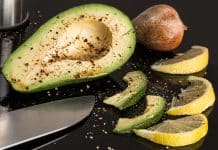Faced with the current economic realities, farmers worldwide are investigating new ways of surviving, as well as expanding their businesses. One of the many opportunities to grow markets, turnover and profits, is by adding value to farm produce through further processing.
Most value-added food products available to consumers have been processed in some way or another, even if the processing is as simple as cleaning produce before it is packed in plastic or net bags.
Two types of processing methods may be performed on raw materials:
- Primary processing: This type of processing includes the simplest of processes such as washing, peeling, chopping, ageing, the milling of wheat for flour production and processing of sugar cane.
- Secondary processing: This type of processing involves the conversion of primary processed products into more complex food products and includes procedures such as mixing, depositing, layering, extruding, drying, fortifying, fermentation, pasteurisation, clarification, heating etc.
Agro-processing of wheat
Baked bread is produced from wheat flour, salt and water that are mixed to form a dough. The dough is aerated with carbon dioxide that is produced by yeast fermentation or other chemical means. Wheaten bread is a baked or partially baked product consisting mainly of wheaten products and which is sold as bread of any form, size or shape and has a mass of more than 100g. A standard loaf of bread should weigh 800g. Various commercial methods can be used to bake bread. These processes differ principally according to the way in which the dough is prepared.
Partially baked bread and rolls are used in bakeries, in-store bakeries, catering establishments and sold directly to the consumer who would then bake it prior to consumption. The partially baked product can be frozen or sold directly as is to the trade and consumers. The unfrozen product has a limited shelf life.
Couscous is a traditional African dish made of coarse wheat flour (semolina/farina) with an appearance similar to broken rice. It is prepared by mixing with water to form dough that is then cooked/steamed. Cooking can be done over broth, often with meat or fruit added. The modern process involves steaming the kneaded dough until all the starch is fully gelatinised and then drying it to produce an instant pre-cooked product.
Extruded wheat flakes are consumed as a ready-to-eat breakfast cereal that only requires the addition of milk. It is made from wheat grits that are cooked and shaped by an extruder before being rolled into flakes.
Fresh noodles: Noodles are thin strips of pasta that are made from ordinary wheat flour and not from semolina as in the case of other pasta products. The final (fresh) product has a moisture content of 32%, while the dried product has a moisture content of 8 to 10%.
Instant dried noodles are pre-cooked (steamed) and dried before packaging and only require the addition of hot water for reconstruction and consumption. The dried product has a moisture content of 8 to 10%.
Instant fried noodles are pre-cooked (steamed) and fried before packaging and only require reheating before consumption. The moisture content of the fried product is only 5 to 8%. It is sometimes referred to as ramen/ramyun.
Oven-puffed wheat: Oven puffing entails cooking and toasting (drying) whole wheat grain to obtain the desired moisture content, before exposing it to a sudden application of heat at atmospheric pressure to vaporise the moisture into steam, and in so doing expanding the product.
Pre-cooked pasta is pre-cooked in the extruder until the starch is completely gelatinised. The final product only requires heating before consumption. It is packed and stored under refrigerated conditions, with or without a sauce or flavouring.

Pretzels are wheat-based snacks made from very stiff dough that is extruded into a unique shape.
Puffed wheat products are consumed as ready-to-eat breakfast cereals which are manufactured from whole, cooked wheat kernels that are exposed to a sudden drop in pressure, causing the kernel to ‘puff’ out.

Quick-cooking pasta is pre-cooked in the extruder and further cooked in microwave ovens prior to drying. The final product only requires a few minutes (four to eight minutes) of cooking to re-hydrate completely. It is thus considered as a convenience product.
Shredded wheat is a ready-to-eat breakfast cereal in the form of a biscuit that only requires the addition of milk prior to consumption.
Tortillas are flat, circular, light-coloured bread, approximately 1 to 3mm thick and 15 to 30cm in diameter. The product is prepared from wheat flour and eaten plain or wrapped around various fillings, used as tasty food scoops, toasted and topped with salad. Tortillas are the base for burritos, tacos and a multitude of other dishes.
Wheat crackers: These biscuits are snacks that are enjoyed together with dips, sauces and spreads. Traditionally a dough is prepared, rolled, cut and baked. The dough mixing and forming steps have largely been taken over by extruders that add greater variety of shape, texture and flavour to the products. The most popular form, however, is flat and square. The manufacturing process is described as very basic and many variations are possible. The same basic process may be used to manufacture other wheat dough products, such as breadsticks, etc. –Agricultural Research Council’s Institute for Agricultural Engineering
The Manual on the Agro-Processing of Cereal Crops Vol. 2 contains complete information on the products discussed above as well as many other processing methods and products available to the cereal processor, and is available from the ARC – Institute for Agricultural Engineering. Contact Elmarie Stoltz on 012 842 4017 or stoltze@arc.agric.za for more information.







